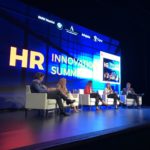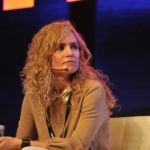Using big data to understand employees
Managing internal data appropriately can be the key to optimizing a company’s human resources – from predicting whether a candidate will be successful to combating brain drain.

What can employee data be used for? While it’s common to talk about data analysis in other areas of a company – in marketing, for example, it´s essential – personnel departments have been among the last to embrace data and conduct predictive analysis.
However, data holds considerable potential for personnel managers: “Big data allows Human Resources departments to know what’s happening and helps us with critical decision-making in a company,” said Joan Clotet, Talent Innovation Manager at Ferrovial, at HR Innovation Summit, a recent conference on trends and innovation organized by RRHHDigital. “ With data, we can find out ahead of time how many people we’ll need to launch a new project, or how many will not be in the company next year, or the average amount of time we’ll need to hire someone with a certain background.”

Jesús Martínez Pardo (Eventelling), María Manso (BBVA), Francesca Gabetti (TeamEQ), Carla Martínez Castellet (Synergic Partners) and Joan Clotet (Ferrovial).
Clotet of Ferrovial explained that in general, when companies “present a strategy, they give a lot of detail about the commercial aspect, but are more vague when it comes to people.” For this reason, since 2015, the infrastructure and services giant has been pushing the human resources department to make more use of data.
Success profiles
María Manso, BBVA Spain’s Head of HR Analytics, said the bank has been doing this since 2008, when it began using data analysis to discover the drivers of satisfaction and employee commitment. “We did studies focused on the brain drain, for example. The data helped us identify what we were doing wrong, so we could correct it. Then we evolved and did studies on successful profiles for the business areas.”
In the final stages, Mansó explained, “We have included our employees in the process. We have seen that it is very useful for the employees if we give them part of the information we have in Human Resources so they can manage and use it themselves.” At BBVA, she added, “We are developing an app to allow employees to see directly how to get to a certain position and what training they needed to do so.”

María Manso, Head of HR Analytics at BBVA.
“We used analytics to identify career paths, anonymize them and create algorithms to automatically offer them to our employees. We want it to be a completely personalized product for our employees. We are evolving and our goal in HR Analytics is for Human Resources to strengthen its role as an advisor, both for employees and for the different areas,” she said.
Dynamic data
On the issue of privacy, she was emphatic: “We go beyond what is simply legal, to do what is ethical. We are going to do things for employees, for their benefit, and we want them to be aware of all that we do.”
Francesca Gabetti, CEO and founder of TeamEQ, who also participated in the round table – had a similar message: “If we want to use data in the present to be predictive, we need data transparency when it comes to the teams, protecting their privacy and ensuring they remain anonymous.”
Gabetti stressed that it is a journey that takes time for most companies: “Currently, we don’t know what is happening within teams because the tools that we have are traditional and provide a static picture of the past.” However, she concluded with optimism: “Data should not be a burden or a difficulty for Human Resources. They need to serve to empower teams and serve leaders. They are an asset for Human Resources. It’s the future.”